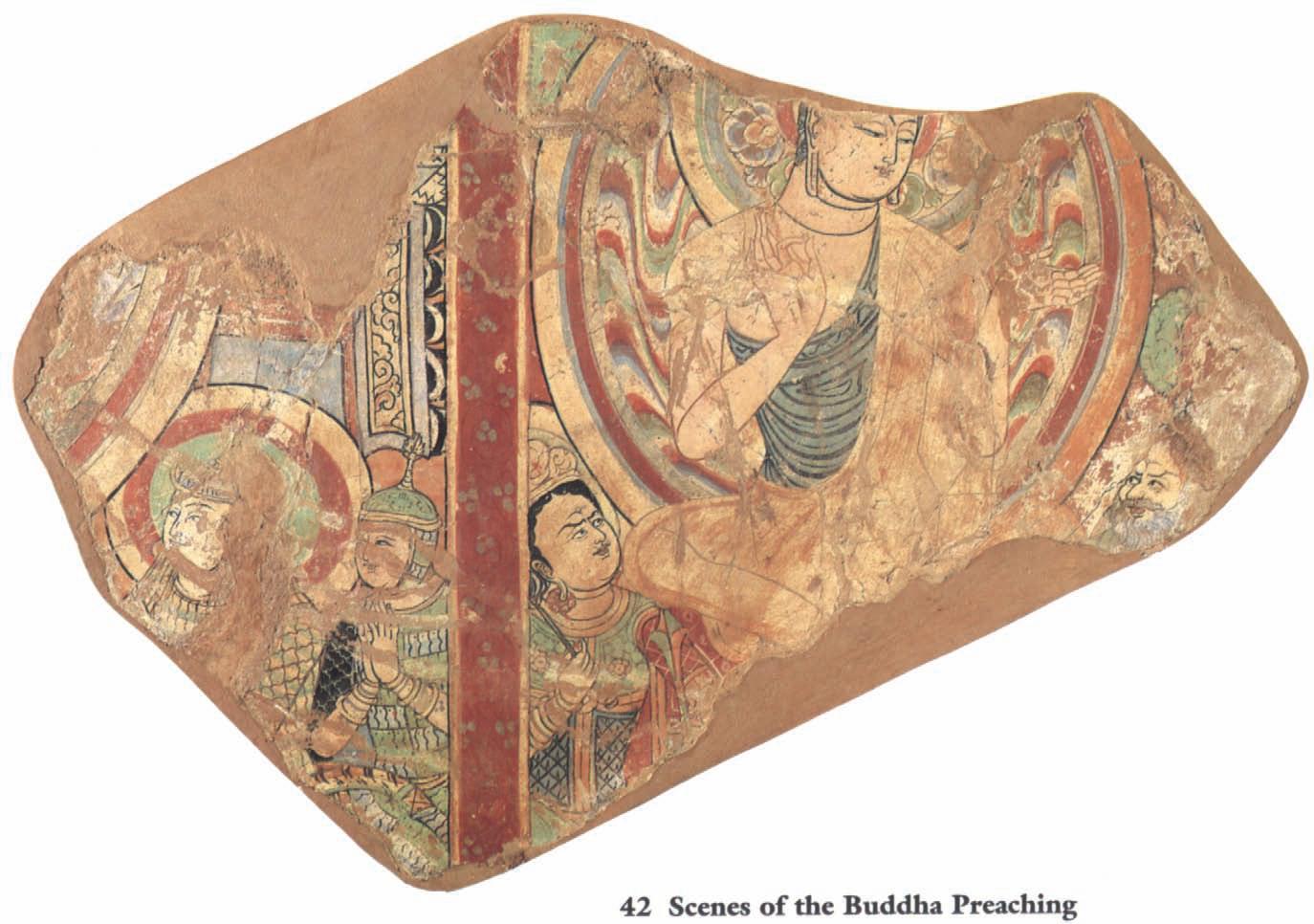
Create an Amazon Business Account
Wall Painting of Budda Preaching and Warriors
from Tumshuk, Tarim Basin, 7th century

A detail of the Warriors from Tumshuk on this Wall Painting Fragment.


42 Scenes of the Budda Preaching
Tumshuk, Eastern Area, 7th century
Wall painting, 51.0 x 75.0 cm.
MIK III 8716
The main ruins at Tumshuk are situated above the hamlet of that name on a ridge whose northern end divides into three spurs. The flat tops of these spurs and parts of the side of the massif between them are covered with the ruins of places of worship. Surprisingly enough, although the stone here is a brittle schist with abundant traces of clay, no works of art in this material have been found at the site.
While the French expeditions led by Paul Pelliot investigated the ruins of monasteries and temples north of the Aksu-Maralbashi road, the fourth German expedition under von Le Coq studied the complexes on the three cliffs to the south.
The area on the middle spur is the smallest and least interesting. On the eastern spur, however, remains of wall paintings were discovered, the only examples to have survived from this two great complexes. Von Le Coq considered the paintings to be quite different from those in the Kucha region and earlier in date.
This fragment of wall painting shows two scenes of the Buddha preaching. On the left the remains of a Buddha mandorla are visible. In front of it, to all appearances, stands a knight whose helmet is an unusual sort of Spangelhelm. The nimbus round his head sets him off from another, younger man to the right, with lamellar armor and a conventional helmet.
A broad border separates this scene from a second, better-preserved one showing a seated Buddha with both hands raised in the teaching position. Webbing can be seen between his fingers. His body is surrounded by a circular mandorla, composed of concentric rings of different colors and filled in with a wavy pattern. The same ornamentation is known to us from later wall paintings under Chinese influence, for example, a large lunette in the Nirvana Cave in Kumtura (see No. 64, Fig. L). The design of the floral motifs around the Buddha's head also suggests a later date for this painting, as does the separation of the scenes by an ornamental border. There is a similar example in the Third Cave from the Front in Kizil, which Waldschmidt dated after AD. 650.
The Buddha inclines his head to the right toward a brahman, whose expressive face with its blue beard has been preserved. To the left of the Buddha we see Vajrapani in armor, in his hands the traditional vajra and a fly whisk. Curiously enough, he is characterized as a demon by fangs in the corners of his mouth.
REFERENCES
Le Coq 1925b, pp. 67-72. Le Coq 1922-26, V, pl. Fl, pp 31ff.
Bussagli 1963, p. 70 (ill.). Indische Kunst 1971, 1976 no. 379.
Source: Along the Ancient Silk Routes. Central Asian Art from the West Berlin State Museums (New York: Metropolitan Museum of Art, 1982), no. 42, pp. 109-10.